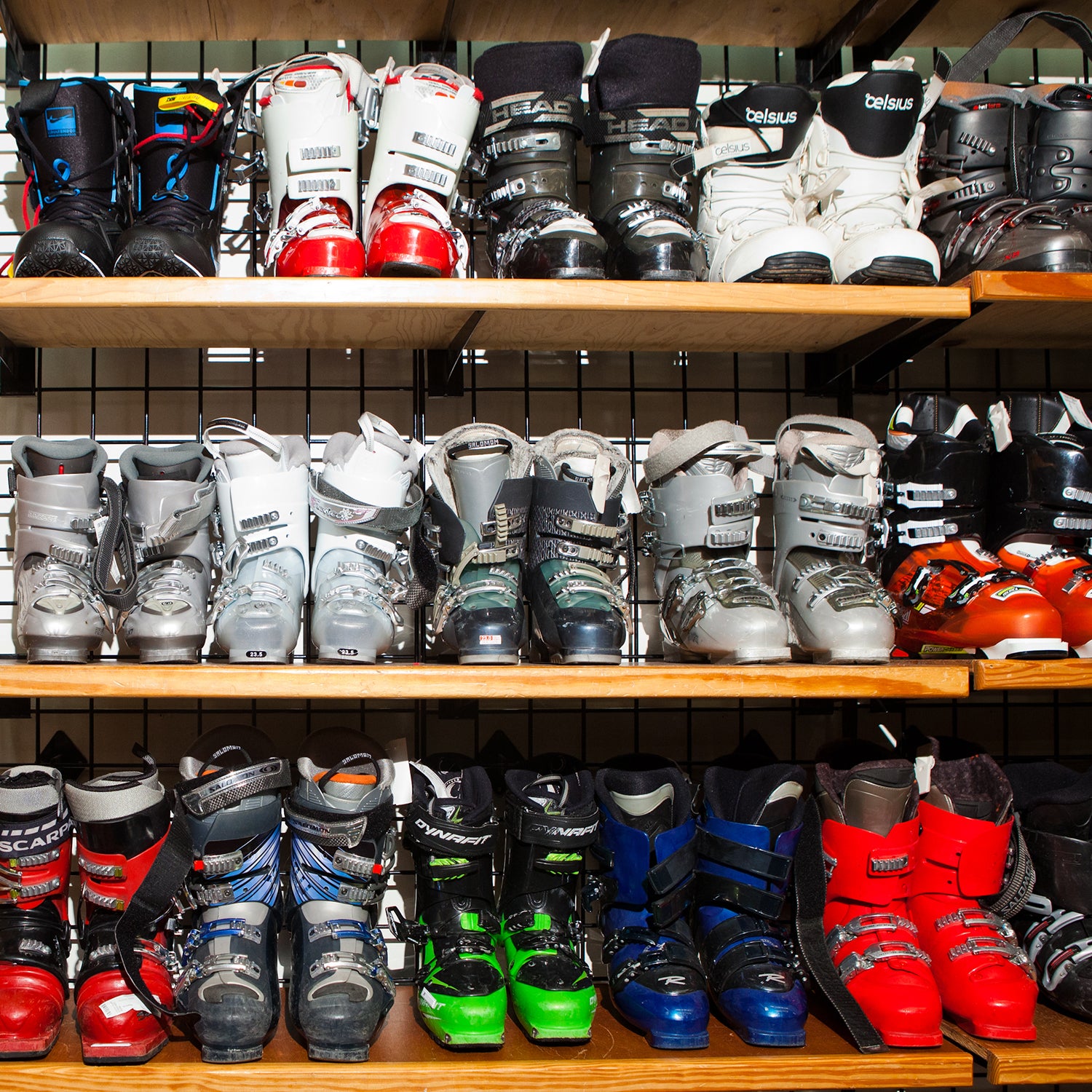Ski swaps are great for scoring affordable gear before the season starts, but you need a game plan to successfully negotiate the scrum. For tips and tricks, I interviewed Jesse Hunt, director of Park City Ski Team, who puts on a giant swap in Park City with up to 50,000 pieces of gear. I also called up my friend Ryan Pyles, who’s been ski bumming for years and has mastered the art of finding deals. Here’s what they said.
Pinpoint What You Want Beforehand
Don't go into a swap with your heart set on a specific model of boot, ski, or binding: you get to choose only from what shows up. But you can be scrupulous about size, brand, and type. Before going in, decide whether you want an inbounds setup, a touring setup, or one that does both. (If you want either of the latter, you’ll probably have to buy new skins.) You should also have an idea of how stiff you want your boot. Do you need a 130 flex or just 100? Figure out your boot size and know which brands work best for your foot by trying some on at a local ski shop or your friends’ houses beforehand. The same goes for skis. Demo a few pairs to get an idea of what kind you want (frontside, all mountain, etc.) and the length range that works for your size, weight, and skiing ability.
Ask a Friend for Help
Even if you know what you’re looking for, swaps can still be overwhelming. The first time I hit a swap, I bribed Pyles with coffee and a six-pack for his help. He helped me narrow down the exact ski I needed after I gave him some general parameters. Pyles also helped me assess the condition of the ski, so I knew what kinds of dings mattered and which were just cosmetic. Tip: Avoid skis with severely damaged edges and top sheets that are delaminating. Scuffed top sheets and minor scratches on the bottom, however, are no big deal.
Show Up Early
Most swaps happen on weekends, and some, including the one Hunt runs, let you in on Friday night if you pay a little extra. If that’s not an option, plan on getting up early on Saturday so you’re among the first in line. The best gear goes first, and it goes fast. The best deals are worth the lost sleep or extra $20.
If You Don’t Need the Best Gear, It’s OK to Show Up Late
If you just need a basic setup—say, for a beginner—you can take your time and show up after breakfast on Saturday. Swaps like the one Hunt runs have plenty of middle-tier gear that sticks around all day. Showing up later also helps with the crowds. Expect the swap to be busy but not a total nightmare.
Don’t Socialize
Just as there are no friends on a powder day, there are no friends at a ski swap. Once you’re in the door, stay focused. You know what you’re looking for, so go find it. You didn’t lose sleep so you can talk to your friends. You lost sleep to find a pair of skis and boots at a killer value.
Be Greedy
Pyles says if you can’t decide between two or three pairs of boots, grab them all, find a corner, and try them on. Same goes for skis: If two or three pairs might work, grab them, find a corner, and look them over—or ask your swap buddy to help you decide. This feels like a jerk move, but everyone does it, and it gives you time to think over your purchase. If you don’t grab everything, those other pairs will be gone once you’re done assessing your first pick.
Set a Price Range, but Be Flexible
Before you head into the swap, do some research. Look on the internet to find out what your ideal setup costs new. Then see if you can find it used. Also ask your ski buddies what they would expect to pay. (I try to find deals at the swap that are at least 50 percent off the initial sticker price.) Then, once you’re inside, be a little flexible. I’ve found that if I’m willing to pay $100 more than my initial budget, I can walk away with what I wanted and still feel like I got a deal.
Never Buy a Used Helmet. Do Buy Used Kit.
Some used helmets look like they’re in perfect shape but still might be compromised. Always buy new when it comes to head protection. When you’re shopping for ski jackets and pants, however, just make sure the zippers work, that they’re hole-free, and that they aren’t discolored, which is a sign of heavy use and signals they probably won’t keep you dry.


